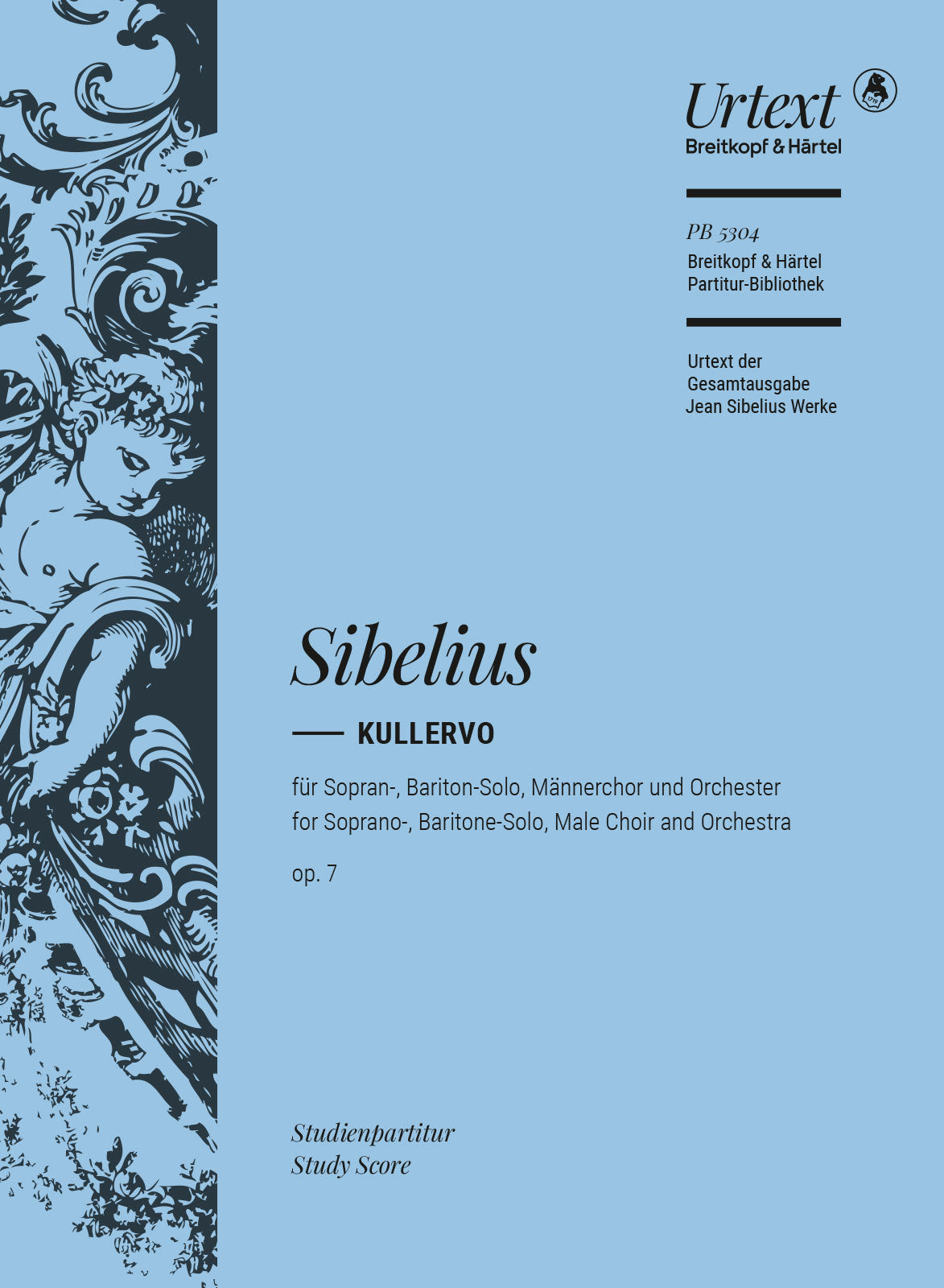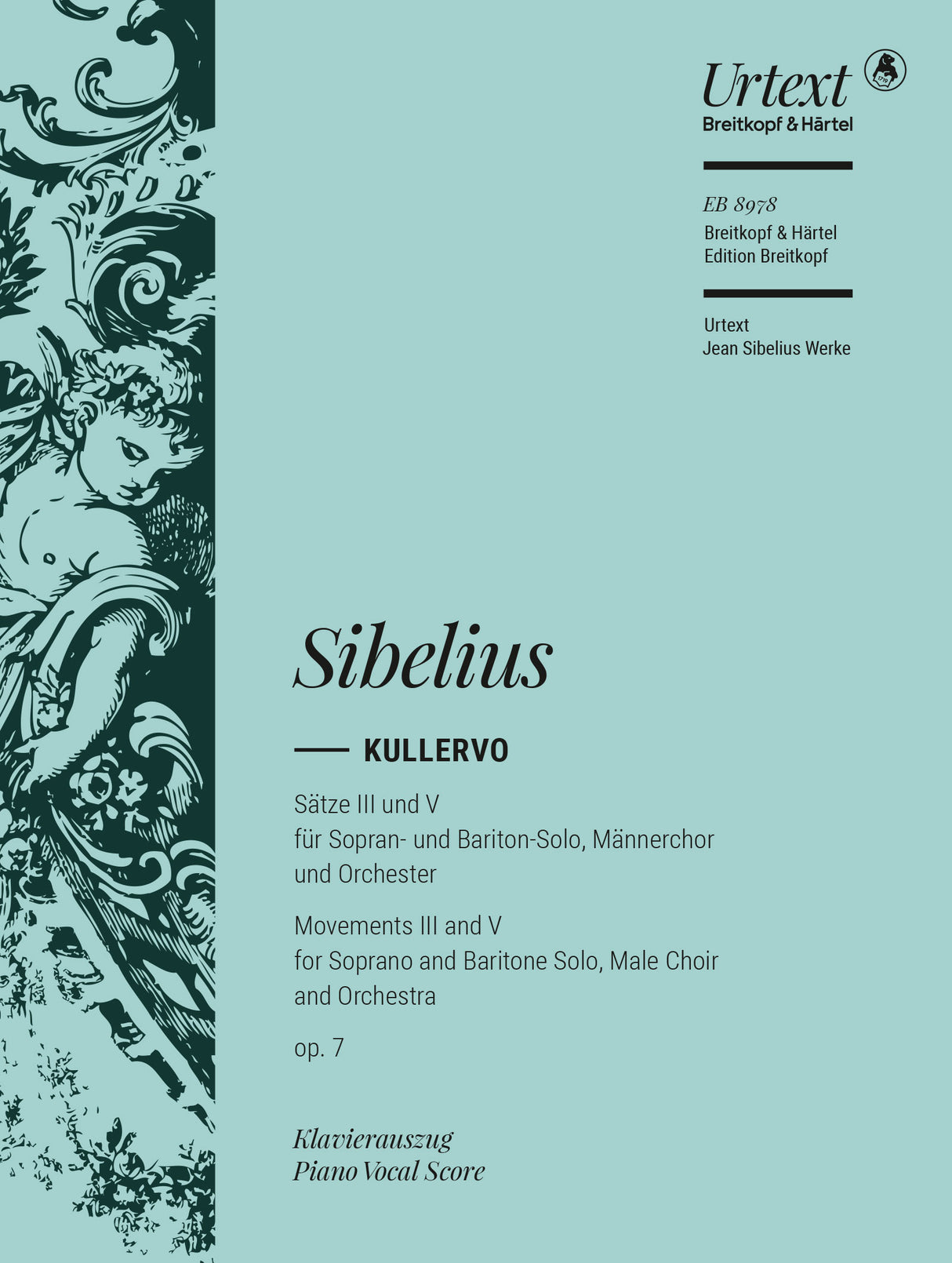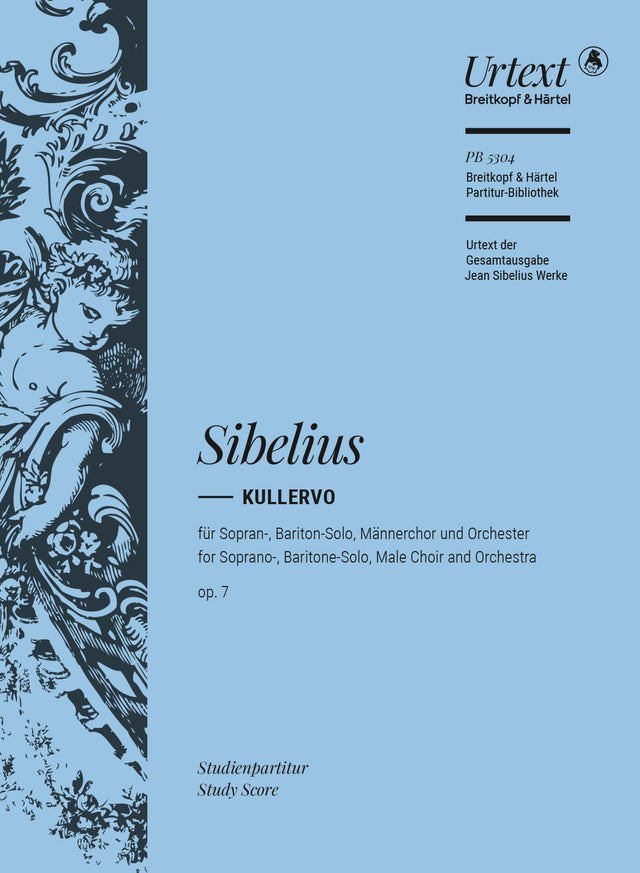Sibelius: Kullervo, Op. 7
In stock and typically ships within 1 business day.
- Composer: Jean Sibelius (1865-1957)
- Editor: Glenda Dawn Goss
- Piano reduction: Yumi Fujimoto
- Instrumentation: Soprano, Orchestra, Baritone, Male Choir
- Work: Kullervo, Op. 7
- Work Language: Finnish
- ISMN:
- Size: 6.5 x 8.9 inches
- Pages: 404
- Urtext / Critical Edition
Description
with the world premiere of Kullervo in 1892, Jean Sibelius staked his claim at the age of 27 to the front ranks of the symphonists of his day, long before he began writing his purely instrumental symphonies and tone poems. At the same time, he defined himself as a modern-day Finnish composer through his choice of the text from the "Kalevala" epic, whose title role he interpreted with modern psychological means. By the time Sibelius was celebrating his Major international triumphs in the early 20th century, his Symphony "No. 0" was long forgotten. After a provisory first edition of "Kullervo" in 1966, the work quickly gained the esteem of Sibelius conductors who also performed the work with the Finnish vocal text outside of their native country. Yet in spite of pioneer recordings such as those of Paavo Berglund, Colin Davis, Jukka-Pekka Saraste, Esa-Pekka Salonen and Osmo Vänskä, the grandiose work had not been adequately present in international concert life up to now – not least because there was no practicable edition. The volumes of the Complete Edition edited by Glenda Dawn Goss now offer a musicologically accurate music text for the first time. This music text forms the basis for the performance material. The complete edition "Jean Sibelius Werke" intends to pave the way for a new evaluation of the Finnish composer and, in particular, of this hitherto editorially neglected work, the composer's only choral symphony.
Vocal Score contains only Movements 3 and 4.
Publishers use a lot of words to describe what they sell, and we know it can be confusing. We've tried to be as clear as possible to make sure you get exactly what you are looking for. Below are descriptions of the terms that we use to describe the various formats that music often comes in.
Choral Score
A score for vocalists that only contains the vocal lines. The instrumental parts are not there for reference. Generally, cheaper than a vocal score and requires multiple copies for purchase.
Facsimile
Reproductions of the original hand-written scores from the composer.
Full Score
For ensemble music, this indicates that the edition contains all parts on a single system (there are not separate parts for each player). In larger ensembles, this is for the conductor.
Hardcover
Hardbound. Generally either linen-covered or half-leather.
Orchestral Parts
Similar to a wind set, this is a collection of parts. In the case of strings, the numbers listed are the number of copies included, though generally these are available individually (often with minimum quantities required).
Paperback
When publishers offer multiple bindings (e.g. hardcover) or study scores, this is the "standard" version. If you're planning to play the music, this is probably what you want.
Performance / Playing Score
A score of the music containing all parts on one system, intended for players to share. There are not separate parts for each player.
Set of Parts
For ensemble music, this indicates that there are separate individual parts for each player.
Solo Part with Piano Reduction
For solo pieces with orchestra, this is a version that contains a piano reduction of the orchestra parts. For piano pieces, two copies are typically needed for performance.
Study Score
A small (think choral size) copy of the complete score meant for studying, and not playing. They make great add-ons when learning concertos and small chamber works.
Vocal Score
A score prepared for vocalists that includes the piano/organ part or a reduction of the instrumental parts.
Wind Set
For orchestral music, this is a collection of wind and percussion parts. The specific quantities of each instrument are notated.
With Audio
In addition to the printed music, the edition contains recordings of the pieces. This may be an included CD, or access to files on the internet.
With / Without Fingering (Markings)
Some publishers prepare two copies - a pure Urtext edition that includes no fingering (or bowing) suggestions and a lightly edited version that includes a minimal number of editorial markings.




